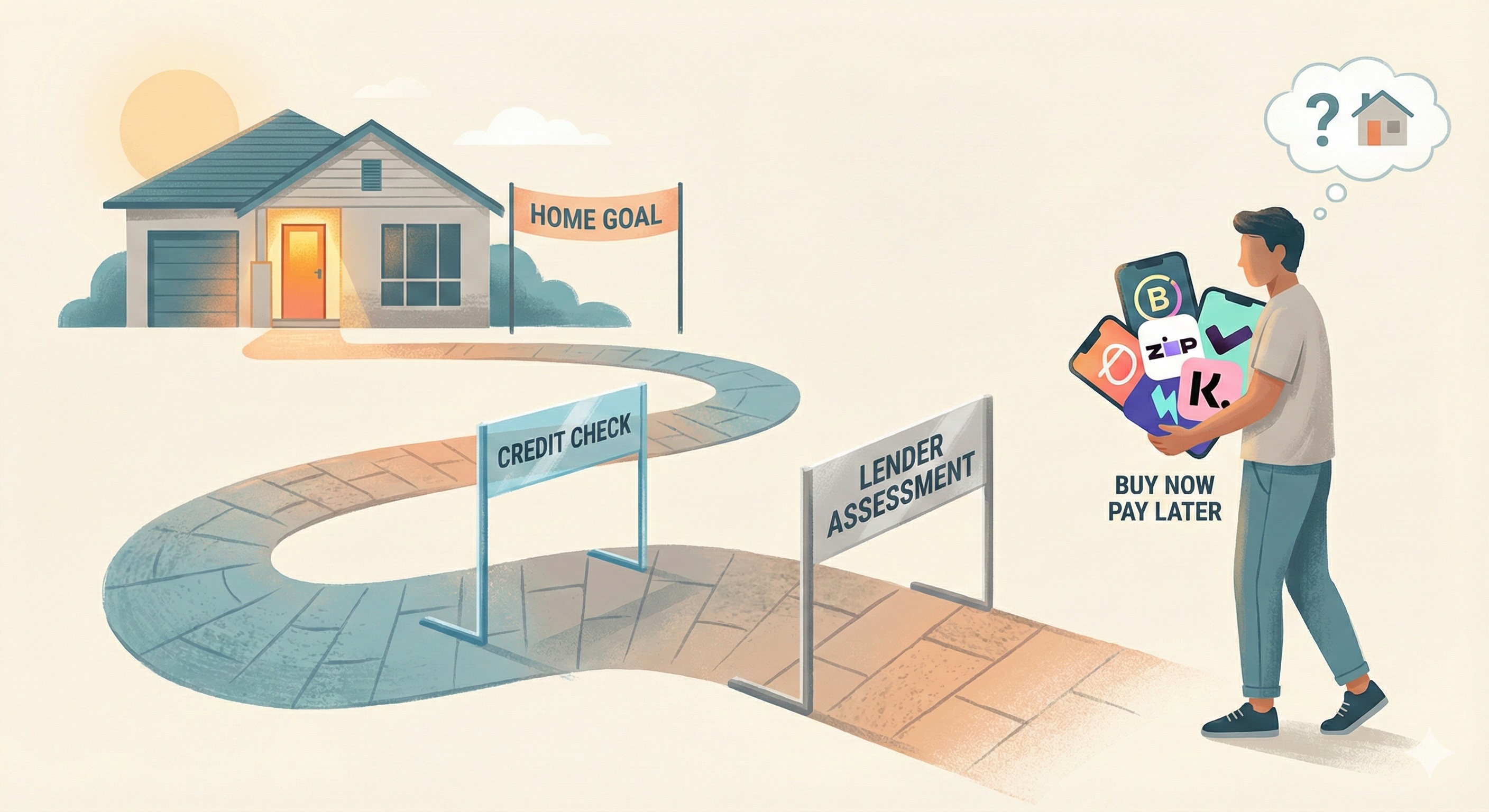
If you're thinking about applying for a home loan in the near future, you might be wondering how your Buy Now, Pay Later usage fits into the picture. It's becoming an increasingly relevant question as lenders adjust their assessment processes and new regulations come into effect.
Lenders have started incorporating BNPL activity into their home loan assessments more systematically. This shift isn't about viewing BNPL negatively, but rather recognising it as a financial commitment that needs to be understood within your overall debt picture.
When you use services like Afterpay, Klarna, or Zip, you're entering into scheduled payment arrangements. From a lender's perspective, these represent ongoing financial obligations similar to other forms of credit. They want to understand whether you can comfortably manage a mortgage alongside these existing commitments.
From 10 June 2025, BNPL services in Australia became regulated under the National Consumer Credit Protection Act 2009, officially classifying them as "low cost credit contracts." This means BNPL providers must now conduct credit and affordability checks, and can report payment defaults to credit bureaus.
BNPL has become increasingly popular across Australia. According to the Reserve Bank of Australia, BNPL transaction values reached approximately $19 billion in 2022 to 2023, representing around 2% of total card purchase value in Australia. Industry data from the Australian Finance Industry Association shows the sector reached $22.9 billion in transaction volume during FY23.
The challenge emerges when multiple BNPL arrangements run simultaneously across different platforms. Because these commitments are spread across various apps and providers, tracking your total obligations can become more complex than you might initially realise.
When assessing your home loan application, lenders review your recent financial behaviour comprehensively. They're considering questions like: How many active BNPL arrangements do you currently have? Are payments being met consistently? Does your total debt picture suggest you can sustainably manage mortgage repayments?
Industry reports indicate that BNPL usage has grown substantially in recent years, with many Australians managing multiple arrangements concurrently. The sector's growth reflects changing payment preferences, particularly among younger consumers.
Lenders incorporate this visibility into your spending patterns as part of their broader assessment of your financial capacity. It's important to note that BNPL usage alone won't necessarily prevent loan approval. Rather, it's one component lenders evaluate alongside your income, savings history, credit record, and other financial obligations.
The new regulatory framework means that from June 2025, missed BNPL payments can now be reported to credit bureaus and may remain on your credit file for up to five years, similar to other credit defaults.
BNPL market in Australia:
Regulatory changes:
Home loan impact:
Track your commitments systematically
Understanding exactly what you owe and when payments fall due helps you maintain control over your obligations. Many people find value in consolidating this information into a single view, whether through a spreadsheet, budgeting app, or the WeMoney platform which can help visualise your complete financial picture.
Review your comprehensive debt position
If you're preparing for a home loan application, gaining clarity on your total debt across all sources provides valuable perspective. This includes credit cards, personal loans, BNPL commitments, and any other financial obligations. Lenders assess this holistically, and understanding it yourself helps you prepare more effectively.
Consider timing strategically
If you're planning to apply within the next 6 to 12 months, being mindful of new BNPL commitments during that period could present your application more favourably. Some people choose to minimise new BNPL purchases in the months leading up to their application, then reassess their approach once the loan is settled.
Maintain consistent payment patterns
If you continue using BNPL, ensuring payments are made on schedule supports your application. Payment consistency demonstrates financial reliability to lenders reviewing your history. Under the new regulations, this becomes even more important as defaults can now affect your credit score.
Assess your actual capacity
BNPL can serve as a useful cash flow management tool when used deliberately for planned purchases. The distinction lies in whether you're choosing to use it as a convenience, versus relying on it because your budget feels stretched. If the latter feels more accurate, it may be worth examining whether your income and expenses are currently balanced before taking on additional mortgage obligations.
BNPL can genuinely work well for some people in specific circumstances. The key differentiator is intentionality: understanding why you're using it, tracking what you've committed to, and ensuring it aligns with your broader financial goals.
If you're working toward homeownership, being aware of how lenders view BNPL usage simply helps you plan more effectively. This isn't about eliminating BNPL entirely from your financial toolkit. It's about understanding how various elements of your financial life connect, and making informed decisions based on that complete picture.
For those using WeMoney, tracking these commitments alongside your other financial activity provides the visibility needed to understand your true position and prepare effectively for major financial steps like applying for a mortgage.
Modern financial management involves navigating an increasingly complex landscape of payment options and credit products. Feeling uncertain about how these pieces fit together, or experiencing stress about debt and spending patterns, is extremely common among Australians.
These feelings don't reflect on your capability or intelligence. They simply reflect the reality of managing finances in an environment with more options and less clarity than previous generations faced.
If you're feeling overwhelmed or unclear about your financial position, speaking with a financial counsellor or adviser can provide valuable clarity. They can help you understand your specific circumstances and identify approaches that work for your situation.
This article contains general information only and is not financial advice. Everyone's situation is different. If you're unsure about your finances or how to prepare for a home loan application, consider speaking with a financial adviser or counsellor who can provide advice tailored to your circumstances.
Understanding your complete financial picture is essential when planning major financial decisions. WeMoney helps you track spending, monitor commitments, and see your full financial health in one place.